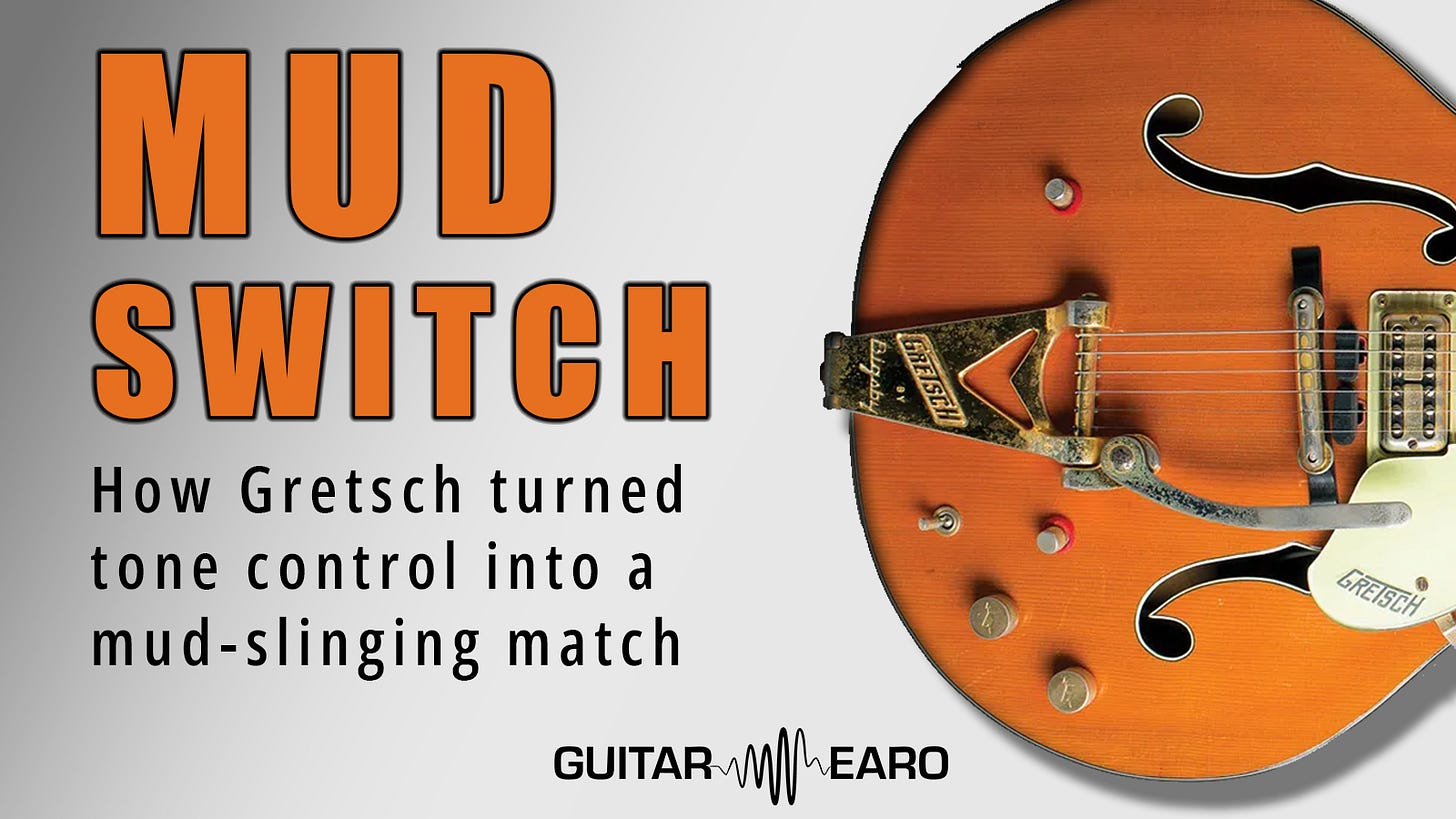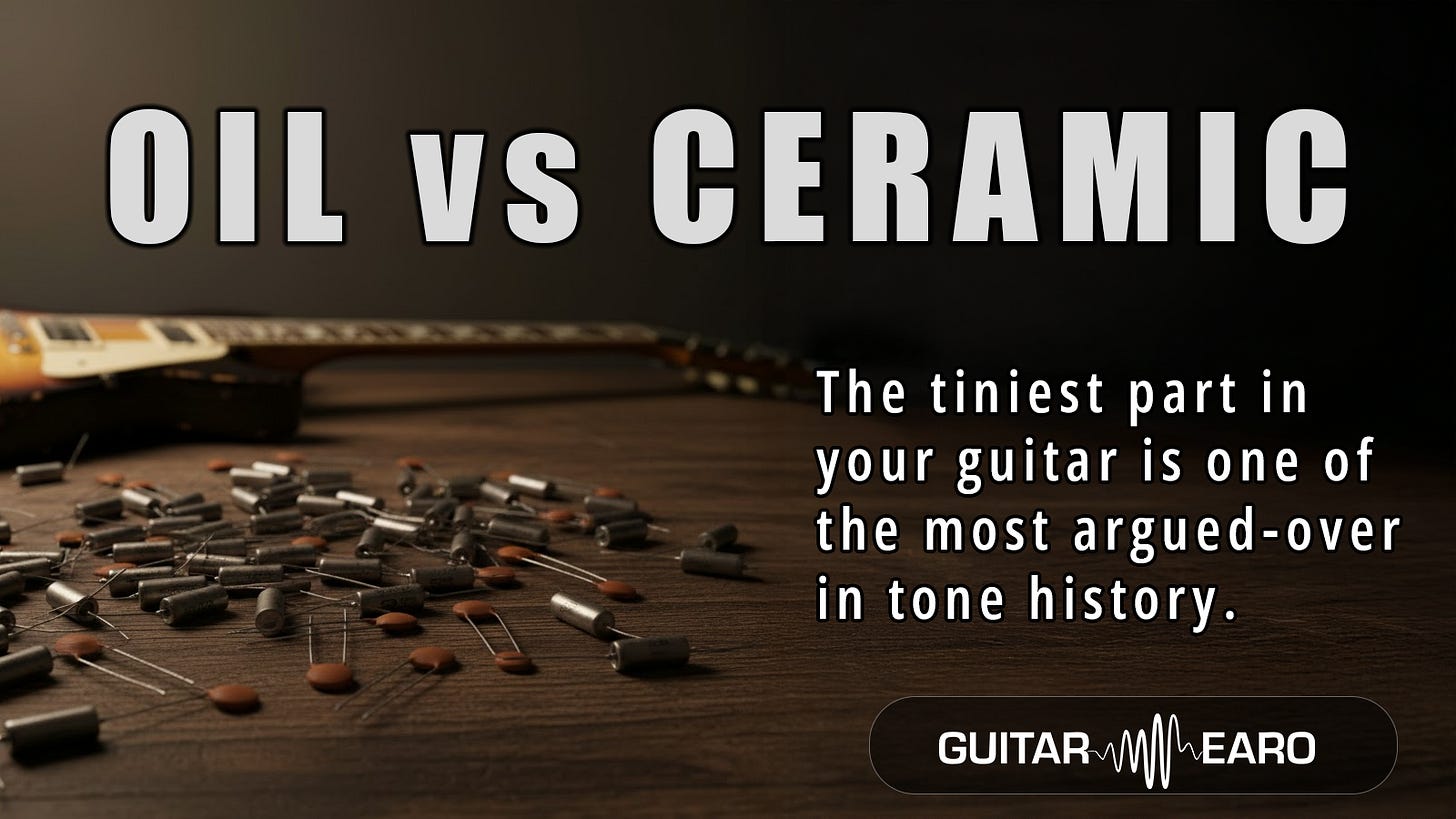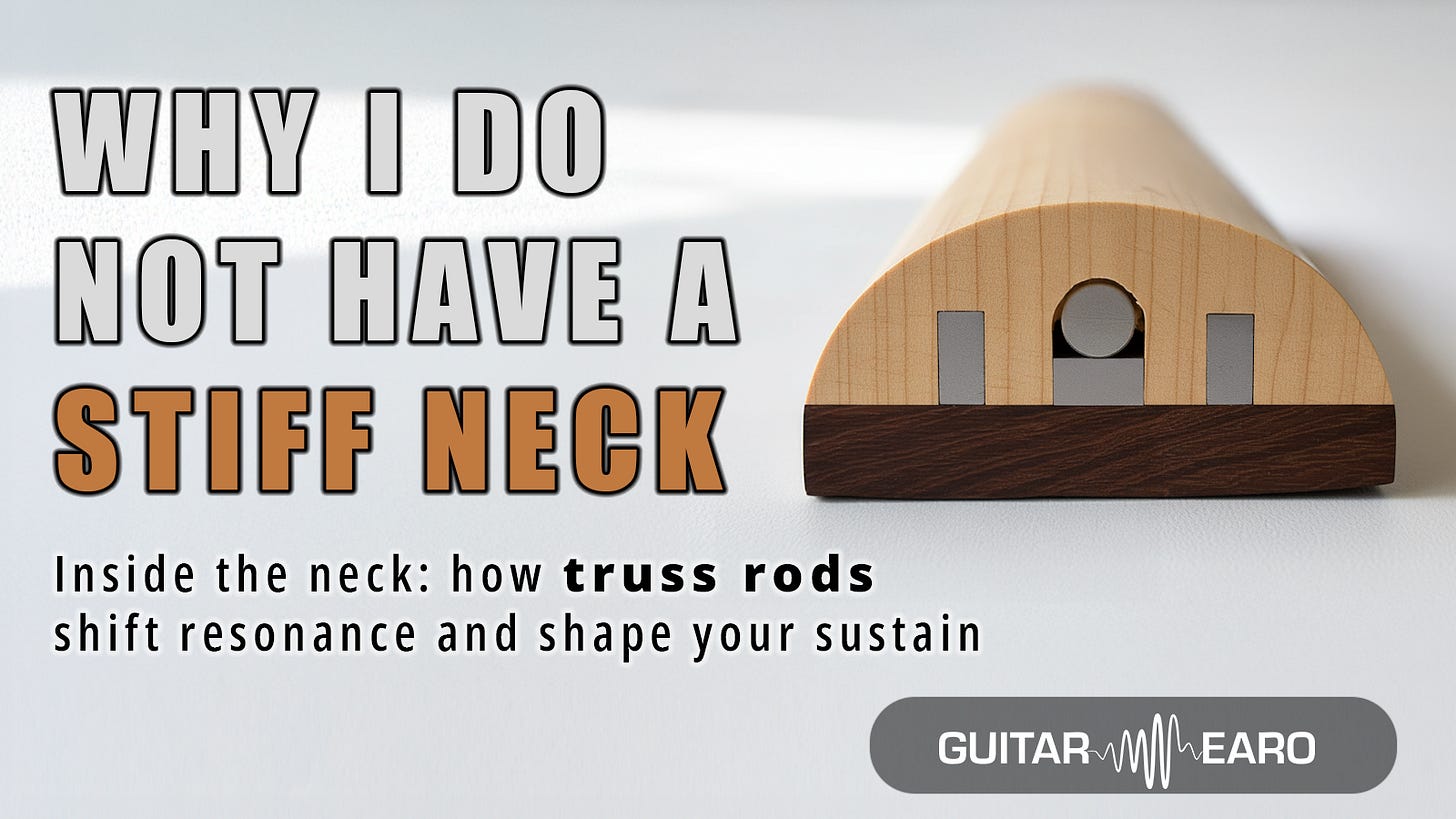In the late 1950s and early 1960s, many Gretsch hollowbody models (including the Country Gentleman and Tennessean) shipped with an unusual feature that players still argue about today: a three-way “tone toggle,” better known (sometimes affectionately, sometimes not) as the mud switch.
Instead of a single knob to roll treble up and down, Gretsch engineers thought players might prefer a set of quick, reliable presets. So they replaced the tone pot with a small toggle near the pickup selector.
The centre position? True bypass: full brightness, no cap in the circuit.
Flip it one way, and a capacitor shaves off some highs for a slightly mellow rhythm sound.
Flip it the other, and a larger capacitor delivers a much darker roll-off.
Two instant “mellow” tones, ready on stage at the flick of a switch.
Why Gretsch Did It
Context matters.
In the mid-century gigging world, many players were switching from bright, cutting single-coil guitars to more versatile sounds that worked in clubs, dance bands, and rock ’n’ roll groups. Having to twist a knob mid-song was fiddly.
Gretsch’s thinking was elegant: a toggle lets you grab a warm rhythm tone instantly, then snap back to brightness for a solo. No guessing, no fine adjustment. Just a binary choice.
It was also part of Gretsch’s identity: they wanted to stand apart from Fender and Gibson. Leo Fender gave players infinite sweep with a pot. Gibson’s Les Paul offered smooth jazz roll-off. Gretsch said: here are the sounds we think you need. Flick, done.
The Problem
Not everyone loved it.
The darker capacitor setting can be extremely dark. To some ears, it does not just mellow the tone: it swamps it. Instead of a warm jazz voice, it becomes what many players simply called mud.
Worse, there is no in-between. With a tone knob, you can ride the control, fine-tune the exact cutoff, and find your sweet spot. With the mud switch, you get Gretsch’s choices, nothing more.
Plenty of players tolerated it. Some yanked it out and rewired the guitar with a conventional tone knob. A few, like George Harrison with his Country Gentleman, made those dark settings part of their sonic signature.
A Love-It-or-Hate-It Quirk
The mud switch is not just a quirky footnote in guitar history. It highlights something deeper about electric guitar design: every manufacturer made opinionated choices about what “good tone” meant.
Fender believed in brightness and control, giving players knobs they could sweep continuously.
Gibson struck a balance between warmth and versatility.
Gretsch doubled down on quick changes and preset flavours, confident that their players wanted retro mellowness at their fingertips.
That design philosophy left fingerprints on decades of recordings.
Why It Still Matters
Today, the mud switch stands as a reminder that guitar tone is not just about physics. It is about culture, design, and the opinions of engineers who thought they knew what players wanted.
Do you value instant recall of specific sounds, or do you want infinite nuance?
Do you prefer the designer’s vision, or your own control?
For some, the mud switch is charmingly retro. For others, it is the first thing to get modded.
Either way, it changed the conversation.
Final Thought
The mud switch may not have been universally loved, but it forced guitarists to confront a simple truth: tone is never neutral. Every control scheme makes an assumption about how you play, and every assumption leaves its imprint on music.
Next time you see that tiny toggle on a Gretsch hollowbody, remember: you are holding a design argument in your hands. And whether you embrace it or bypass it, the mud switch tells a story of a brand willing to take risks, even if it meant slinging a little mud.
👉 Question for readers:
Have you ever played a mud switch Gretsch? Did you love the instant presets or hate the darkness? Drop your thoughts in the comments, I am curious how you hear it.



